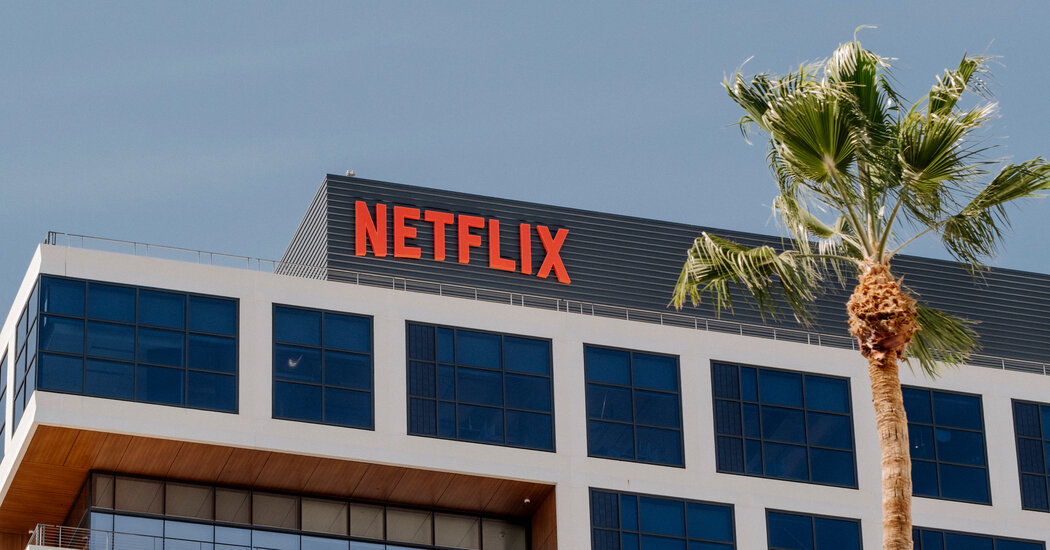
Netflix added 8.3 million subscribers in the fourth quarter, raising its worldwide subscriber base to 222 million, but the company said on Thursday that it expected growth to slow in the opening months of 2022.
That news, in the company’s earnings release, prompted the stock to drop nearly 20 percent in after-hours trading. For the first quarter of this year, Netflix forecast an additional 2.5 million subscribers, down from the four million it added during the same quarter of 2021. That would be one of the streaming giant’s slowest opening quarters in years.
The number of subscribers added in the fourth quarter was slightly off the 8.5 million that Netflix had forecast, but the 1.2 million added from the United States and Canada region reflected its strongest quarter there since the beginning of the pandemic. Most of the growth came outside the United States, as has been the case for the last few quarters.
Netflix’s co-chief executive Reed Hastings admitted during an investor conference call on Thursday that he was frustrated by the slower growth in subscriptions. “We are staying calm and trying to figure it out,” he said.
He added: “It could well be Covid effects. It could be we are pushing on a smaller market than we thought. But I’m not sure why.”
Netflix’s competition has increased significantly in the last few years, with Disney+ and HBO Max making significant strides in streaming. This month, Warner Media announced that HBO Max had exceeded its subscriber estimates, growing to 73.8 million customers by year’s end.
Yet Mr. Hastings discounted the idea that competition could be driving the slowdown. “There’s more competition than there’s ever been,” he said, “but, you know, we’ve had Hulu and Amazon for 14 years, so it doesn’t feel like any qualitative change there.”
Last week, Netflix said it was raising the monthly prices for all of its U.S. subscription plans, with the basic service increasing to $9.99 and the standard plan to $15.49. (The basic plans allows the user to stream on one device in standard resolution, while the standard plan allows for two in high definition.)
“It’s a bit of an admission that they may be hitting the ceiling for growth in the U.S. and Canada,” said Berna Barshay, an analyst with Empire Financial Research. “For the U.S. and Canada at least, the growth is probably going to come from price and not volume.”
The company last raised rates in October 2020, and its subscriber base continued to grow. This time, analysts expect the price increase will result in more cancellations but higher revenue.
“I do think that they have permission to take this price increase,” Ms. Barshay said. “At $15.49 they are only 49 cents above HBO Max. There’s no reason they shouldn’t be the leader. Their quality at the top end is as good as anybody’s, and their quantity just outdoes anybody.”
Netflix said one reason for its depressed first-quarter forecast was that many new releases were scheduled for the end of the period. It noted that two of its most highly anticipated projects — the second season of “Bridgerton” and “The Adam Project,” a film starring Ryan Reynolds — will debut at the end of the first quarter in March.
The growth in the fourth quarter was fueled by a strong content at the end of 2021. Films like “Red Notice” and “Don’t Look Up” became the most-watched movies in the company’s history, according to Netflix, and returning shows like “Cobra Kai” and “The Witcher” attracted viewers as well. “Squid Game,” which was released near the end of the third quarter, broke through globally in the fourth quarter. Netflix said it had accounted for 1.65 billion hours of viewing time.
Ted Sarandos, Netflix’s other co-chief executive, was more sanguine about the business.
“What’s really been great about 2021, even through all those conditions, is we were able to prove two theses that we bet on years ago,” he said. “One big one is around our investment in international programming.”
Referring to shows like “Squid Game,” “Call My Agent” and “La Casa de Papel,” he added, “And we were betting that you could take films and series from anywhere in the world and entertain the entire world.”
The company made $607 million in profit on $7.7 billion in fourth-quarter sales. Investors had been expecting $379 million in profit and $7.7 billion in revenue, according to S&P Capital IQ.







